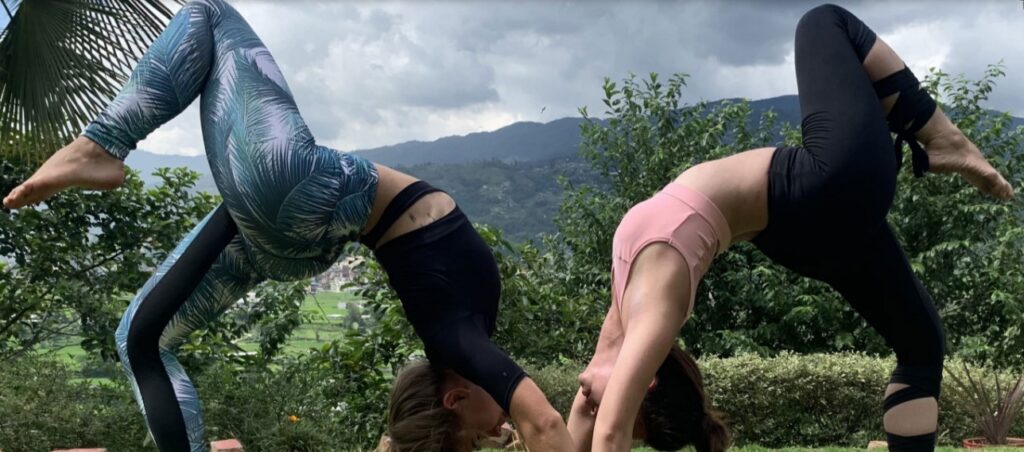
World Yoga day 2022
Yoga is a priceless gift of ancient Indian tradition. The word “yoga” is derived from the Sanskrit root Yuj meaning “to join”, “join” or “to unite”, symbolizing the unity of mind and body; thought and action; restraint and fulfillment; harmony between human beings and nature, and a holistic approach to health and well-being.
International Yoga Day 2022 will be celebrated on 21 June 2022 with the theme ‘Yoga for Humanity’ across the world with great enthusiasm. As the pandemic COVID-19 continued this year also, yoga is helping people to stay energetic and have a strong immune system.
‘Yoga for Humanity’ is chosen theme for International Yoga Day 2022. The theme is focusing on the numerous benefits of yoga. Recognizing the importance of yoga, this year’s yoga day theme focuses on how yoga helps to cure Covid-19 and how it will help them achieve holistic health for every individual.
One of the best holistic exercises that not only keeps our body flexible and healthy but also our minds and souls energized is yoga.
The theme of International Yoga Day 2022: The 8th International Yoga Day (IYD) 2022 will be celebrated all over the world with the theme ‘Yoga for Humanity’. The theme of the 8th IYD 2022 was announced by PM Narendra Modi in his ‘Mann Ki Baat’ webinar on 30 May 2022.
PM Narendra Modi said this year’s theme was chosen after much deliberation and consultation and aptly portrays how Yoga has served humanity in mitigating sufferings during the COVID-19 Pandemic.
He said that Yoga will bring people together through kindness and compassion during the post-Covid geopolitical crisis and promote a sense of unity across the globe. The theme of last year’s event (International Day of Yoga 2021) was ‘Yoga for Wellness’.
Yoga is a trend that has flourished over the years; Rather it has become a trendsetter in maintaining both physical and mental health. Each yogic activity is the key to improving flexibility, strength, balance, and achieving harmony.
Yoga Portal is a platform to help people adopt, practice, and enjoy Yoga every day. It is a perfect gateway to discovering the best yoga resources, general yoga protocol training videos, and the latest yoga programs to participate in.
21st June is marked to raise awareness of the health benefits of yoga. Many kinds of research done over the years have proven that yoga can be beneficial in reducing stress, increasing self-awareness improving immunity, and boosting health – mentally, physically, and spiritually.
International Yoga Day is celebrated across countries to spread awareness of practicing yoga for a healthier mind and body. Practicing breathwork, asanas, and meditation helps regulate energy levels to promote peace, calm, and balance.
Basic rules and etiquette of Yoga practice-
- Basic rules & etiquette for Yoga
- Before starting to practice asanas, the bladder should be emptied and the bowels should be evacuated.
- Asanas come easier after taking a bath. After doing them, it is desirable to bathe some fifteen minutes later.
- Taking a bathe/shower both before and after practicing asanas refreshes the body and mind. It is better to take cold shower after practice it.
- Though asanas should be done on an empty stomach, if this is difficult, a cup of tea/coffee/milk may be taken before doing them.
- Allow at least 3 to 4 hours to elapse after a heavy meal before starting the practice.
- Food may be taken after half an hour after yoga practice.
- The best time for yoga practice is auspicious dawn (very early morning) or late in the evening.
- In the morning the mind is calm, composed and fresh.
- Asanas should be done in a clean airy place, free from insect and noise.
- No undue strain should be felt in the facial muscles or any other parts of the body.
- Do not exert and over strain while remaining in the posture.
- In the beginning, keep the eyes open. When you are perfect in a particular asana you can keep your eyes closed.
- During asana practice, breathing should be done through the nostrils only.
- Exhale while bending forward and inhale while moving backwards.
- After completing the practice of asanas, lie down in savasana for at least 10 to 15 minutes.
- Avoid asanas during the menstrual period. Some asanas are beneficial, if they are done under the guidance of the experienced teacher.
- Relax for 10 to 15 seconds at least after each asana.
- Wear comfortable clothes for practicing yoga.
- First begin with easy poses and thereafter you can advance to the tough ones.
- Do not practice yoga on the bear floor. Always use yoga mat/thick bed sheet/folded blanket for Yoga.
- Before you start Yoga, clean your nostrils and throat of all mucus.
Body massage through Yoga-
Yoga is perhaps the only form of activity that massages all the internal glands and organs of the body in a profound way, including those such as the prostate that become externally stimulated during our entire lifetime.
Yoga acts on different parts of the body in a great way. This stimulation and massage of the organs in turn benefit us by keeping diseases away and providing a foreshadowing at the first possible instance of a possible onset of disease or disorder.
Benefits of Yoga-
- People from all over the world perform yoga to relax and keep their bodies fit. People all over the world have started to realize the benefits of yoga.
- Yoga exercises have electrifying impacts on the nervous system through their non-tiring physiological activities that bring about ease of body and mind. Unlike the normal workouts that concentrate more on the inflation of the muscles, Yoga takes care of every little part of the anatomy.
- The human body is a machine that continues to perform without any break, and the metabolic process creates toxins and waste products. Therefore, to maintain the purity of blood and elimination of toxins, both external and internal hygiene are indispensable.
- The benefits of various yoga techniques have been considered to improve body flexibility, performance, stress reduction, attainment of inner peace, and self-realization.
- Physical Benefit – It improves body flexibility, strong cardiovascular endurance, muscle strength, relaxation of muscle tension, weight control, increased energy level, increased immune system, etc.
- Spiritual benefits include the meaning, purpose, direction, inner peace of life, peace, and aesthetic pleasures.
- Mental benefits include stress relief, avoidance of stress-related disorders, better decision-making skills, and more.
Do’s and Dont’s of Yoga practice
DO’S:
- Śauca means cleanliness – an important prerequisite for Yoga practice. It includes the cleanliness of surroundings, body, and mind.
- Asanas should be practiced on an empty stomach. Consume a small amount of honey in lukewarm water if you feel weak.
- Bladder and bowels should be empty before starting Yogic practices.
- Practice sessions should start with a prayer or an invocation as it creates a conducive environment to relax the mind.
- Yogic practices shall be performed slowly, in a relaxed manner, with awareness of the body and breath.
- A Warm-up or loosening exercise and stretches before asanas are mandatory to avoid injuries.
- Asanas should be done slowly and one should move to advanced postures with practice.
- Try to eat Satvik food (Avoid meat, eggs, onion, garlic, and mushrooms from the diet).
- Stay hydrated before going into yoga practice.
- Wear supportive and comfortable clothing. Light and comfortable cotton clothes are preferred to facilitate easy movement of the body.
- Yoga should be practiced in a well-ventilated room with a pleasant draft of air.
- Use a mat with a good grip to do Yogasanas.
- Be aware of breathing while doing Yogasanas.
- Complete the yoga session with relaxation techniques to cool down.
- Do not hold your breath unless it is specially mentioned to do so during the practice.
- Breathing should be always through the nostrils unless instructed otherwise.
- Do not hold the body tight or give undue jerks to the body.
- Perform the practices according to one’s capacity. It takes some time to get good results, so persistent and regular practice is very essential.
- There are contra-indications/ limitations for each Yoga practice and such contra-indications should always be kept in mind.
- Yoga session should end with meditation/ deep silence / Sankalpa / Śānti pāṭha etc.
DONT’S:
- Yoga should not be performed in a state of exhaustion, illness, in a hurry, or in acute stress conditions.
- Women should refrain from regular yoga practice especially asanas during their menses. Relaxation techniques and pranayama can be done instead.
- Don’t perform yoga immediately after meals. Wait until 2 to 3 hours after a large meal.
- Don’t shower or drink water or eat food for 30 minutes after doing yoga.
- During illness, surgeries, or any sprains or fractures, one should refrain from Yoga Practice. They can resume yoga after consulting experts.
- Don’t do strenuous exercises after yoga.
- Don’t practice yoga in adverse and extreme weather conditions (too hot, too cold, or humid).
- According to the yoga texts for the spiritual seeker one needs to follow The yamasor restraints. They are the basic principles that are to be followed to lead spiritual growth.
Consult health experts if you have any health conditions or you are pregnant before doing yoga practice.
